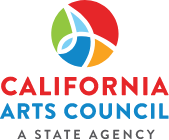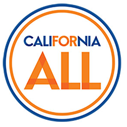Grantmaking Evaluation
Introduction
The California Arts Council’s programs aim to allow all Californians to thrive via public support for creativity and the arts. To assess the effectiveness of its grantmaking and contract-based funding, CAC contracted with the consulting firms Scansion and WolfBrown to engage in a comprehensive, 30-month-long grantmaking evaluation. Beginning in February of 2020, the final deliverables were presented to the Council at a public meeting in August 2022.
Field Scan of Equity in Arts Funding in California
The Field Scan provides a deep analysis of California’s arts infrastructure and access to funding, with particular focuses on racial and geographic equity. These analyses offer critical context for the other components of the evaluation. Methodology included a scan of the existing literature, extensive analysis of quantitative data from CAC and other sources, as well as qualitative data from arts stakeholders in three communities across the state. The evaluation team collaborated with the National Assembly of State Arts Agencies (NASAA) in preparing the Field Scan.
Readers of the Evaluation Plan will notice its focus on Racial Equity, which is consistent with the Racial Equity Statement in CAC’s Strategic Framework. To clarify that intention of that focus, the introduction to the Evaluation Plan states:
Following PolicyLink’s definition, we think of equity as the just and fair inclusion of all in an arts ecosystem in which all can prosper and reach their full potential (1). We intentionally prioritize race in our analysis with the awareness that racial identities intersect with many other identities that are systemically disadvantaged (e.g., based on gender, sexuality, disability, language, veteran status). Due to the social construction and history of race in our country, the challenges faced by racialized communities are particularly severe. Grantmakers in the Arts has pointed out that, even “within other oppressed peoples’ communities (including women, members of the LGBTQI community, people with disabilities, and others), it has been well-documented that people of color still face the worst social outcomes (2).” The Government Alliance on Race & Equity (GARE) notes that due to the specific nature of systemic racism, “strategies to achieve racial equity differ from those to achieve equity in other areas. ‘One-size-fits-all’ strategies are rarely successful (3).” By focusing specifically on racial equity, while maintaining an awareness of intersectional identities, we believe our analysis will yield insights that are beneficial to all groups. As GARE pointedly notes, “Systems that are failing communities of color, are actually failing all of us (4).
1. https://www.policylink.org/about-us/equity-manifesto
2. https://www.giarts.org/arts-funding/racial-equity
3. https://www.racialequityalliance.org/about/our-approach/race/
4. https://www.racialequityalliance.org/about/our-approach/benefits/

